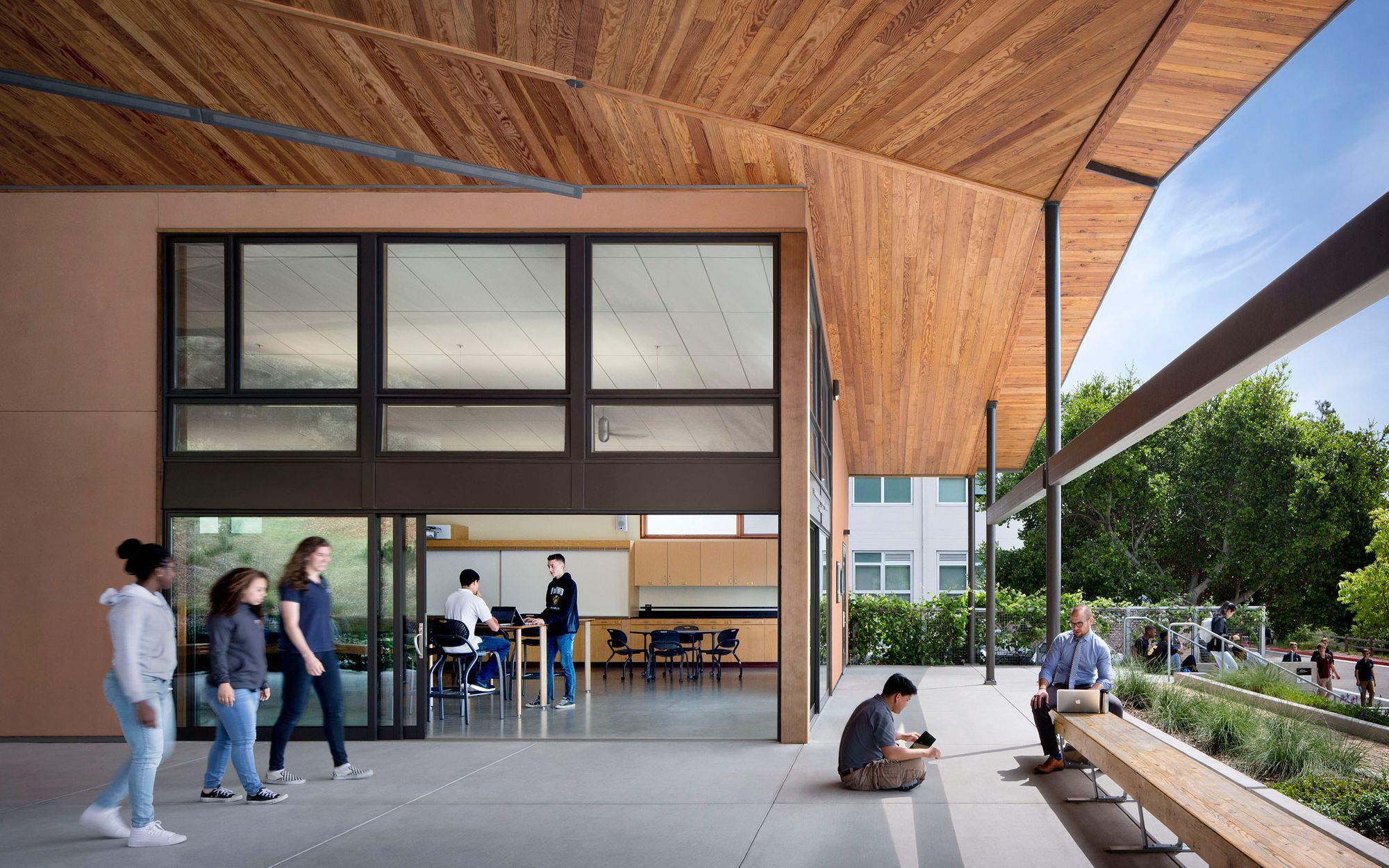Zero energy schools have experienced exponential growth across United States and Canada with an 850% increase in projects since 2010, according to tracking by New Buildings Institute (NBI) and summarized in the recently released 2019 Zero Energy Schools Watchlist for K-12 Schools, Colleges, and Educational Projects. In fact, schools represent the largest segment of commercial zero energy buildings. These efficient structures use only as much energy as can be generated locally with renewable resources and reduce carbon emissions that are fueling climate change.
According to the Schools Watchlist, there are 191 ZE schools in the United States and Canada—35 educational facilities with verified ZE performance, and an additional 156 with emerging status, meaning a zero energy goal. The rapid progress of these of schools has been driven by early adopter districts and design teams that recognize the benefits, and dedicated policies and programs working to knock down the barriers that dissuade the pursuit of zero energy projects.
Cost fears versus realization of benefits
Most cash-strapped districts are wary about adding costs for energy efficiency and renewable installations (typically solar panels). However, leading school design teams are proving that zero energy is possible even within existing budget limitations. In Arlington, Va., a design team made the business case of utility cost avoidance and improved student and teacher well-being to convince the district that they could push beyond the original building design goals to achieve zero energy status ultimately with no additional cost to the district. Even when first costs are slightly higher, some districts are weighing the value of improved learning environments against the slight increase in upfront design costs that usually pays back within a few years from energy cost savings.
Studies show that classrooms with features common in zero energy schools, such as daylighting, efficient/quiet mechanical systems and increased indoor air quality, contribute to improved test scores, higher rates of cognitive function and higher attendance. With students spending approximately 1,000 hours per year in a school, transforming classrooms into healthy and productive spaces is of the utmost importance, especially when the short-term and long-term health of students and staff is at risk. In Horry County, S.C., the districts desire to progress student outcomes and save money on energy costs pushed the school board to commit to five new zero energy projects.
What started as pilots is now seeing an expanded scale. In Boulder Valley, Colo., the district has rolled out an ambitious master plan to have its portfolio of more than 50 schools be zero energy by 2050. San Francisco Unified School District is pursuing similar campus-wide goals. What’s more, states like Virginia have seized upon this opportunity by passing Virginia HB 2192, a facilities modernization bill that includes zero energy goals set forth by the ASHRAE Advanced Energy Design Guide for K-12 Zero Energy School Buildings and goes further to require renewable energy generation at new and renovated sites.
School buildings as a living laboratory
Benefits of zero energy schools extend beyond the classroom to the curriculum. Districts are recognizing that zero energy schools provide an opportunity for teachers and students to use the building itself for STEAM (Science Technology Engineering Art and Math) skills such as teamwork, research, time management, iterative thinking and technology implementation. In Garden Grove, Calif., high school science students analyzed energy data and occupancy patterns to provide recommendations to the retrofit designers. Their occupant behavior data informed the design and was the beginning of a cultural shift to incorporate the students in energy outcomes.
Getting started with clear steps
Those interested in pursuing zero energy should take the following intentional steps.
- Benchmark the district’s building portfolio to understand the energy performance.
- Use collected data to establish energy reduction goals, including energy use intensity targets.
- Gain stakeholder support to develop and implement policies, plans and practices.
- As the planning progresses, leverage building upgrades so they follow a path towards zero energy.
- Don’t go it alone. Districts should use zero energy experiences of others to zero to avoid pitfalls.
For help, visit the Getting to Zero Schools Resource Hub, a collection of the best examples of policies, programs and guidance for districts working towards zero energy.







